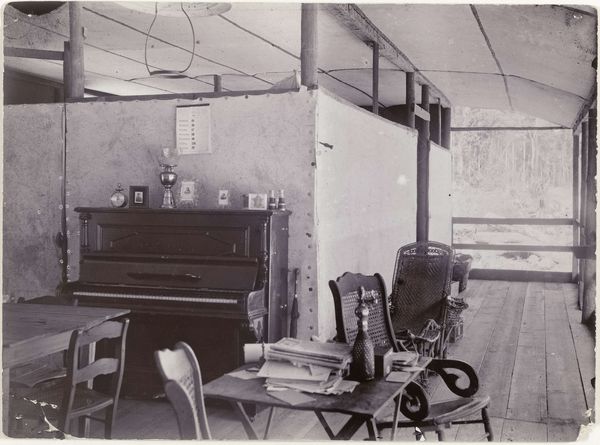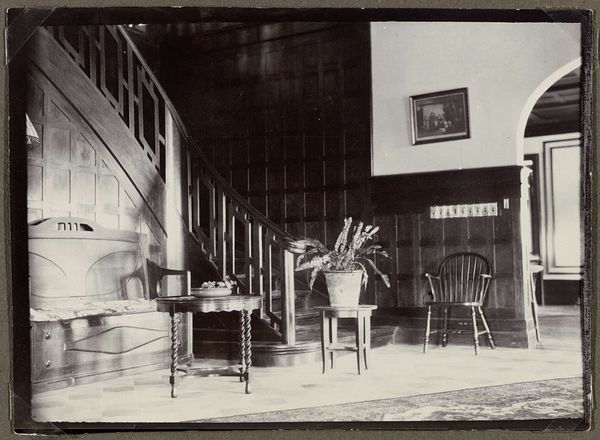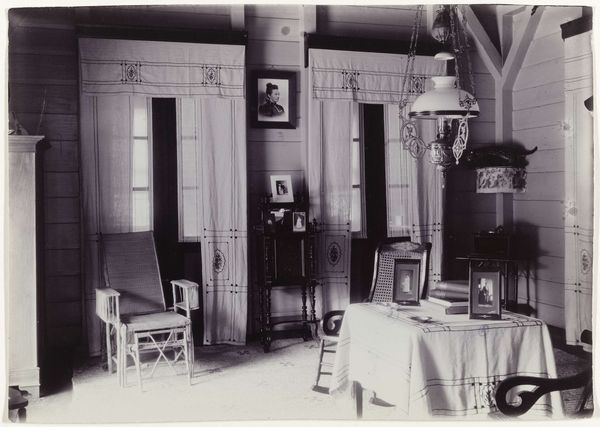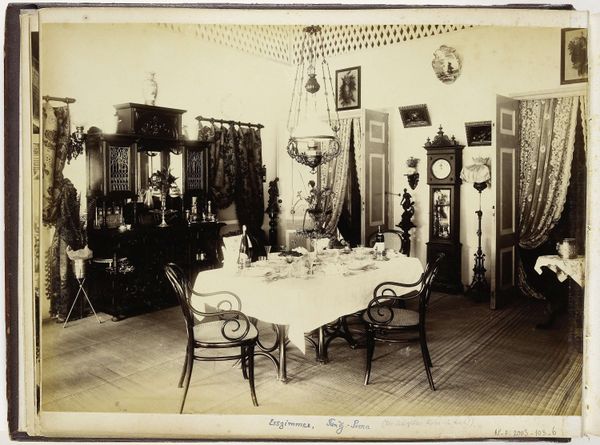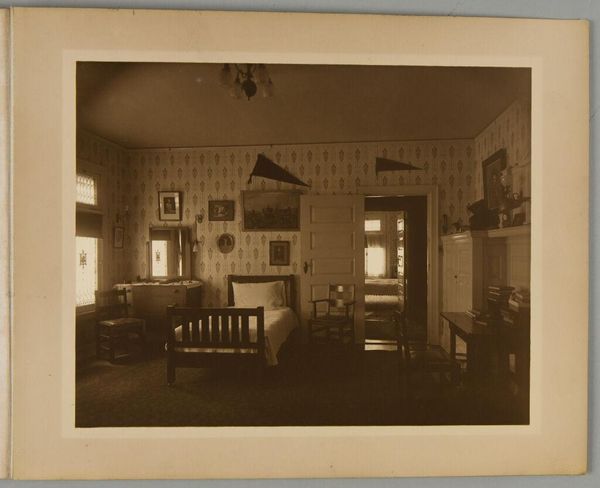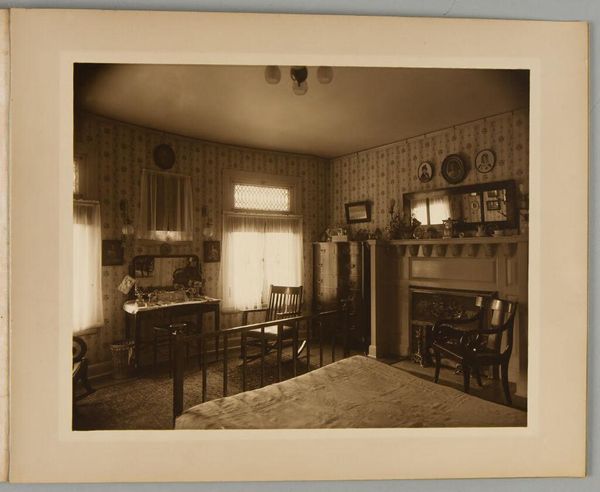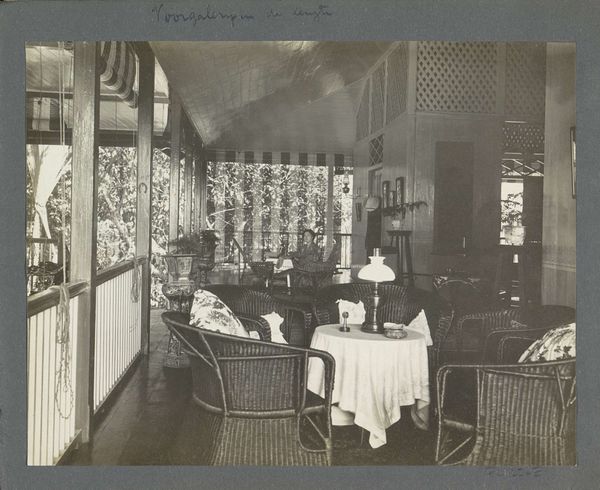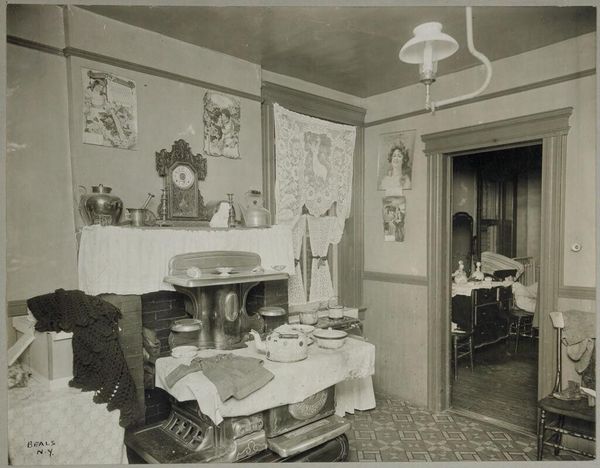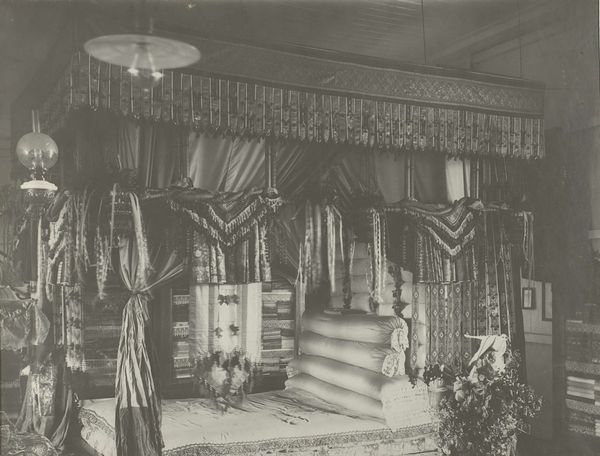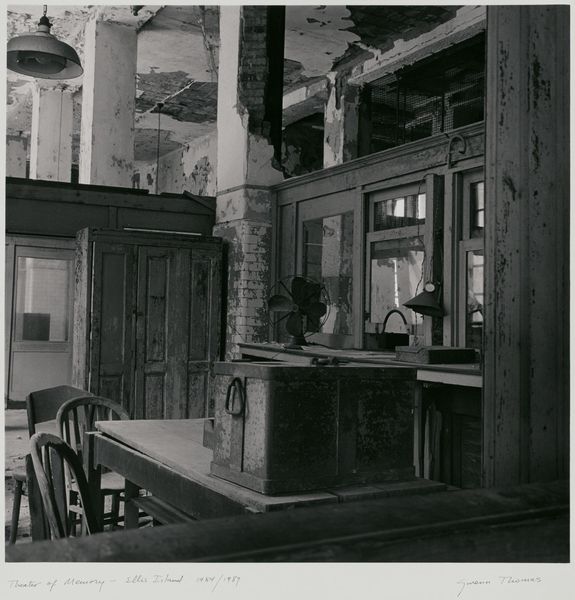
photography
#
black and white photography
#
photography
#
black and white theme
#
black and white
#
monochrome photography
#
monochrome
#
monochrome
Dimensions: height 122 mm, width 175 mm
Copyright: Rijks Museum: Open Domain
Jacob Evert Wesenhagen made this photograph of the interior of the Temporary House in Mäaboberg at some point in his lifetime. It’s interesting to see the textures here, how they’re all flattened out and made equal by the photographic process. I think of photography in terms of time, and how the passing of time changes an image. There’s something ghostly about the light in this image, that suspended lamp looks like its floating, it feels like time has stopped still. The stillness is broken, though, by the shadows that hint at movement, a domestic scene that has been abruptly interrupted, like a stage set awaiting a troupe of actors. I’m reminded of the interiors of Vilhelm Hammershøi, the way he uses light and shadow to create a mood of quiet contemplation. Both artists invite us to linger in the space between seeing and feeling, to embrace the ambiguity that makes art so endlessly fascinating.
Comments
rijksmuseum about 2 years ago
⋮
The Lawa Railway was intended to speed up transport of the gold people hoped to find in East Suriname to the capital Paramaribo. Wesenhagen was associated with this ambitious enterprise as a medical doctor. He was an amateur photographer and shot the building activities, as well as the tranquil interior of his makeshift house in Maäboberg. The construction of 173 kilometres of railway tracks proved too premature: hardly any gold was found.
Join the conversation
Join millions of artists and users on Artera today and experience the ultimate creative platform.
